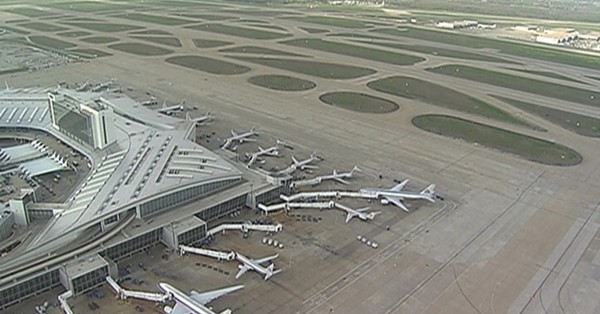DFW Airport telecom outage exposes ATC network vulnerabilities
A multi-hour outage in the Dallas–Fort Worth airspace tied to legacy telecom services triggered cascading delays and cancellations, spotlighting urgent modernization needs for U.S. air traffic networks.
Outage timeline and operational scope
On Friday afternoon, a telecommunications failure forced a ground stop across Dallas Fort Worth International (DFW) and Dallas Love Field, with ripple effects at several regional airports. The stop began in the early afternoon and was lifted after roughly two hours, transitioning to a ground delay as the system recovered. Operations returned to normal levels by Saturday, though intermittent issues persisted into the morning. By the end of the day Friday, hundreds of flights were delayed or canceled, with the largest concentration at DFW.
Impact by facility and airline
The outage hit the FAA’s Dallas TRACON, the approach and departure control facility that manages aircraft within roughly 30–50 miles of the metroplex up to around 10,000 feet. American Airlines, which runs its largest hub at DFW, experienced the brunt of the disruption, canceling more than 500 flights on Friday and additional flights on Saturday as the operation stabilized. Southwest Airlines, the dominant carrier at Love Field, saw far fewer cancellations but still significant delays. Flight throughput at DFW fell from about 100 departures per hour to only single digits for several hours.
Root cause: TDM failures and broken redundancy
The FAA attributed the incident to multiple failures in TDM-based data services delivered by a local telecom provider, compounded by redundancy gaps overseen by a prime contractor.
Legacy TDM dependencies in ATC transport
The affected services support radar feeds, radios, and controller systems that depend on deterministic, low-latency transport—a domain where legacy TDM circuits remain entrenched in ATC networks. While stable, these circuits are brittle when subject to physical plant incidents and vendor process errors, particularly when multiple services share common infrastructure elements.
Dual-path failure from fiber cuts and shared routes
Initial field reports tied the outage to fiber damage that simultaneously knocked out primary and backup data paths. That indicates a lack of true route diversity—often the Achilles’ heel of redundant designs. If both circuits traverse shared ducts, handholes, spans, or aggregation nodes, a single cut can defeat “redundant” configurations, especially in dense metro builds.
Vendor oversight gaps and failed failover
The FAA highlighted that contracted oversight did not ensure failover worked as designed. This is a classic resilience gap: high-availability architectures on paper do not guarantee operational continuity unless path diversity, failover logic, and dependency maps are continuously validated. The incident mirrors outages earlier this year impacting Northeast ATC facilities, suggesting systemic issues in how critical telecom dependencies are engineered and tested.
Why this outage matters for telecom and aviation
The event underscores the fragility of analog-era transport in a digital-by-default aviation system that is scaling traffic, automation, and data sharing.
Aging TDM versus digital, IP-based ATC
U.S. airspace modernization depends on moving from legacy TDM and analog systems to resilient, IP/Ethernet-based backbones with deterministic QoS, path diversity, and automated failover. Programs such as ADS-B, Data Comm/CPDLC, and SWIM assume reliable, packetized transport. When transport crumbles, the entire operational stack reverts to manual throttling and ground stops—erasing efficiency gains. The Dallas incident is a visible reminder that the transport layer is now mission-critical software infrastructure, not just “plumbing.”
Permitting delays that hinder route diversity
Even when agencies and carriers plan for diverse routes, rights-of-way, make-ready, and local permitting can delay fiber builds and relocation for years. That raises the temptation to accept partial redundancy or shared-path diversity in metro areas. The result is cost-optimized but risk-prone designs that meet SLA checkboxes yet fail in black-swan metro incidents.
Strategic actions to harden critical ATC networks
Enterprises, carriers, and agencies should treat this as a blueprint for shoring up transport resilience and vendor accountability.
Architect for true physical and logical diversity
Insist on physical and logical separation: different last-mile providers, separate central offices/hubs, distinct conduits and bridge crossings, and diverse power domains. Require “proof of diversity” artifacts—GIS route maps, splice case IDs, and fiber records—verified annually. Add a tertiary path using alternative media such as microwave, LTE/5G, or LEO satcom for control-plane continuity.
Migrate to IP/MPLS with deterministic QoS
Accelerate migration from TDM circuits to MPLS/segment routing with traffic-engineered paths and fast reroute. Where ultra-low jitter is needed, use time-sensitive networking profiles and hardware timestamping. Employ dissimilar vendor gear across active/standby paths to reduce correlated failures.
Instrumentation, failover drills, and SLOs
Go beyond availability SLAs. Define service-level objectives around failover time, packet loss during switchover, and path independence. Instrument with real-time telemetry, synthetic probes on all paths, and route analytics that detect shared physical segments. Run quarterly failover drills and chaos tests coordinated with ATC ops to validate runbooks and vendor escalations.
Multi-layer backups: optical, IP, LTE/5G, LEO
Layer resilience: optical rings for metro diversity, IP path diversity for routing, and an out-of-band control channel over cellular or satellite for minimal ATC communications if fiber fails. For critical voice and data, pre-stage codecs and prioritization profiles on alternate bearers to preserve controller-pilot comms and surveillance data at degraded rates.
What to watch next in North Texas resilience
Procurement, architecture choices, and service-level enforcement in North Texas will signal how fast the ecosystem can close these gaps.
FAA modernization contracts and diversity requirements
Track updates to FAA telecom and network services contracts and timelines tied to airspace modernization, including upgrades at TRACON facilities. Expect tighter requirements on route diversity attestation, automated failover testing, and multi-carrier strategies in large metros.
Carrier diversity builds and restoration commitments
Watch for Frontier and other providers to publish diversity enhancements, new metro rings, and alternative access builds around DFW and Love Field. Airlines will scrutinize restoration times and may push for co-funded tertiary paths. If recent Northeast outages are a guide, we should also see stronger cross-agency coordination on permitting to enable physically diverse builds.
The Dallas outage was short, but the lesson is enduring: in critical infrastructure, redundancy that shares a fate is not resilience—architectural diversity, verified continuously, is.









































